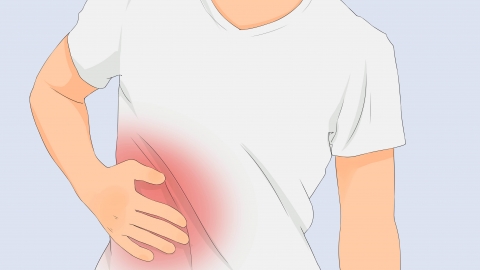What are the causes of hemangiomas on the liver?
Generally, the development of hepatic hemangiomas may be caused by abnormal vascular development during the embryonic period, hormonal fluctuations, hepatic vasculitis, vascular dilation due to chronic liver disease, or abnormal vascular repair following liver trauma. If discomfort occurs, timely medical consultation is recommended. Detailed explanations are as follows:
1. Abnormal Vascular Development During the Embryonic Period
During embryonic development, abnormal differentiation of endothelial cells or disordered formation of the vascular network in the liver may lead to congenital vascular abnormalities, which can result in hemangiomas. This is considered a congenital physiological factor and typically does not require special treatment, although annual liver ultrasound examinations are recommended to monitor the size of the hemangioma. Maintaining a regular lifestyle and avoiding excessive fatigue can help reduce the metabolic burden on the liver.
2. Hormonal Fluctuations
In situations such as pregnancy or oral contraceptive use, changes in estrogen and progesterone levels may stimulate hepatic vascular endothelial cells and increase the risk of developing hemangiomas. Self-administration of hormone medications should be avoided, and any use of such drugs should strictly follow medical guidance. Maintaining emotional stability through activities like listening to music or walking can help reduce hormonal fluctuations. Regular liver examinations are also recommended to monitor vascular changes.

3. Hepatic Vasculitis
Inflammation caused by pathogen invasion of intrahepatic vessels can damage vascular wall integrity and reduce vascular elasticity. Long-term inflammatory stimulation may induce hemangioma formation, often accompanied by dull pain in the hepatic region. Anti-inflammatory and anti-infective medications such as cefaclor capsules, azithromycin dispersible tablets, and metronidazole tablets should be used under medical guidance, following a complete course of treatment to control inflammation. A bland diet is recommended during treatment, avoiding spicy or greasy foods, and drinking plenty of water to promote metabolism.
4. Vascular Dilation Due to Chronic Liver Disease
Conditions such as chronic hepatitis and cirrhosis can impair intrahepatic blood circulation, causing hepatic vessels to remain under long-term high pressure. Gradual vascular dilation may lead to hemangioma formation, possibly accompanied by symptoms such as fatigue and jaundice. Treatment of the underlying disease should be conducted under medical supervision, using medications such as entecavir dispersible tablets, compound softshell turtle甲 soft liver tablets, and glutathione tablets. Regular follow-up assessments of liver function and imaging are necessary, and strenuous activities should be avoided to prevent vascular rupture.
5. Abnormal Vascular Repair Following Liver Trauma
Following liver trauma such as impact or surgery, abnormal proliferation of vascular endothelial cells during the repair process after vascular rupture may lead to hemangioma formation. Significant trauma may cause hepatic discomfort shortly afterward. Immediate medical attention is required after trauma, with bed rest as advised and avoiding premature physical activity. Wound cleanliness should be maintained during recovery to prevent infection. Regular liver ultrasound examinations are recommended to monitor vascular repair. If hemangioma enlargement occurs, prompt medical attention is necessary.
In daily life, maintaining a balanced diet rich in vegetables, fruits, and high-quality protein is important, while alcohol consumption should be avoided. Engaging in mild physical activities like walking or yoga can help improve overall physical health.








